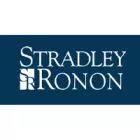IRS Issues Final Regulations Providing Relief From Excess Taxation of CFC Dividends
The IRS has issued final regulations that provide relief in cases where the extraordinary disposition rule for controlled foreign corporation (CFC) dividends and the disqualified basis rule in Section 951A, when applied together, give rise to excess taxation of a Section 245A shareholder or a Section 245A shareholder and related party. (See our prior coverage here.) The proposed regulations provided a coordination mechanism that involved two operative rules that would avoid certain excess tax problems: (1) one that reduces disqualified basis in certain cases (the DQB reduction rule), and (2) one that reduces an extraordinary disposition account in certain cases (the EDA reduction rule). The final regulations adopt the proposed regulations with one modification. Under the proposed regulations, the DQB reduction rule generally applies when, as to a Section 245A shareholder, extraordinary disposition E&P become subject to U.S. tax by reason of the application of the extraordinary disposition rule to a distribution of the extraordinary disposition E&P. In general, the DQB reduction rule provides that basis attributable to gain to which the extraordinary disposition E&P is also attributable is no longer disqualified basis. The final regulations provide that the DQB reduction rule should also apply by reason of a prior extraordinary disposition amount. (Section references are to the Internal Revenue Code of 1986, as amended (Code).)
Partnership Special Enforcement Matters Proposed Regulations Issued
The IRS has issued proposed regulations (REG-123652-18) on partnership special enforcement matters. These proposed regulations were previously discussed in Notice 2019-6. (See our prior coverage here.) The proposed regulations except certain partnership-related items that involve a special enforcement matter from the centralized partnership audit regime. The centralized partnership audit regime, which was created by the Bipartisan Budget Act of 2015 and effective for taxable years of a partnership beginning after Dec. 31, 2017, determines adjustments and generally assesses and collects the tax at the partnership level. A technical corrections act related to the central partnership audit regime, which was passed in March 2018, added Sections 6241(11) regarding the treatment of special enforcement matters and 6232(f) regarding certain collections matters.
The two main items addressed by the Notice where the ability to elect out of the centralized partnership audit regime in certain situations and adjustments to partnership related items. To the first matter, in general, a partnership is eligible to make an election out of the centralized partnership audit regime if it has 100 or fewer partners for the taxable year, each partner in the partnership is an eligible partner, the election is timely made, and the partnership notifies its partners of the election. Notice 2019-6 addressed situations where a qualified subchapter S subsidiary (QSub) is a partner of a partnership and whether such a partnership could elect out of the regime. As discussed therein, the Treasury Department and the IRS noted that allowing partnerships with QSubs as partners to elect out of the centralized partnership audit regime could present special enforcement concerns because it could enable partnerships with over 100 ultimate taxpayer partners to elect out of the regime. In order to avoid such enforcement issues, the proposed regulations provide that a QSub is not an eligible partner for purposes of making an election out of the centralized partnership audit regime.
To the second matter, the proposed regulations provide mechanisms to include adjustments to a partnership's chapter 1 taxes, penalties, additions to tax, or similar amounts in the imputed underpayment and to account for these amounts if the partnership elects to push out the adjustments under Section 6226. In addition, the proposed regulations provide a mechanism to account for any adjustments to a previously determined imputed underpayment. The proposed regulations also address (1) adjustments to items that are not items of income, gain, loss, deduction, or credit, (2) situations when a partnership ceases to exist, and (3) miscellaneous amendments to the regulations finalized in 2019. (See our prior coverage here.)
IRS Releases Like-Kind Exchange Final Regulations
The IRS has released final regulations under Section 1031 regarding like-kind exchanges. (See our prior coverage here.) Section 1031, as amended by the 2017 Tax Cuts and Jobs Act (TCJA), provides that no gain or loss is recognized on the exchange of "real property" held for productive use in a trade or business or for investment (relinquished real property) if the relinquished real property is exchanged solely for real property of a like-kind that is to be held either for productive use in a trade or business or for investment (replacement real property). The final regulations address the definition of real property under Section 1031 and also provide a rule addressing the receipt of personal property that is incidental to real property received in a like-kind exchange. (Prior to the TCJA amendment, Section 1031 was not limited to real property.)
The final regulations adopt the proposed regulations with some modifications. Specifically, with regard to classification, the final regulations allow for state or local definitions of real property, and with regards to the purpose or use test (using the function of property in determining whether it is real property or not), the final regulations eliminate it as applied to tangible property, which will allow for some tangible property (e.g., property that is permanently affixed to real property) to be considered real property. In addition, certain intangible property, such as leaseholds or easements, is considered an interest in real property and thus real property under Section 1031.
Taxpayers must use Form 8824, Like-Kind Exchanges, to report any like-kind exchange in a taxable year and must file it with their tax return for the year they transfer property as part of a like-kind exchange.
IRS Releases 2020 list of Required Amendments for Qualified Retirement Plans
The IRS, in Notice 2020-83, has provided the 2020 Required Amendments List, which applies to both individually designed plans qualified under Section 401(a) and individually designed plans that satisfy the requirements of Section 403(b).
NY Department of Taxation and Finance Provides Responsible Party Relief for Sales & Use Tax Liabilities
The New York State Department of Taxation and Finance issued Technical Memorandum TSB-M-20(2)S, which provides relief from sales and use tax liabilities for certain responsible persons. New York tax law imposes personal responsibility for payment of sales and use taxes on certain owners, officers, directors, employees, managers, partners, or members (responsible persons) of businesses that have outstanding sales tax liabilities. A responsible person is jointly and severally liable for the tax owed, along with the business entity or any of the business' other responsible persons. This means that the responsible person's personal assets could be taken by the Department to satisfy the sales tax liability of the business once that liability is fixed and final. The memorandum provides the following relief for eligible responsible parties: (1) no penalty payments and (2) sales tax liability of the business will be reduced to such person's pro rata share.
The content of this article is intended to provide a general guide to the subject matter. Specialist advice should be sought about your specific circumstances.



